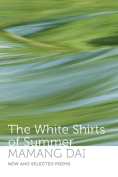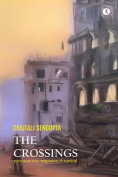Puppet Flower: A Novel of 1867 Formosa by Yao-Chang Chen
 New York. Columbia University Press. 2023. 289 pages.
New York. Columbia University Press. 2023. 289 pages.
The risk of misunderstanding looms in Puppet Flower: A Novel of 1867 Formosa, Yao-Chang Chen’s second historical novel of five and the first to be rendered in English. It is March 1867 when the American ship Rover is wrecked at the southern tip of Taiwan. Though the vessel sinks, a small group of passengers makes it to land, where they encounter the Koaluts tribe of the Paiwan people. Payarin, a member of the tribe who witnessed the foreigners approach, reflects: “Once, long ago, their tribe had been invaded by a red-haired people. Those ‘Red-Hairs’ fired guns that could kill at impossible distances. Not more than twenty of them had killed nearly all of the people of Koalut . . . such a heavy blood debt weighed yet on their hearts.”
These memories of loss fuel a desire for justice in him and his people. Ultimately, fourteen American sailors are killed, but one passenger escapes to Takau (present-day Kaohsiung) to tell the tale. The Rover Incident, as this true historical event is known, is the catalyst for what is to come: American retaliation, Qing government involvement, and ultimately the signing of a treaty to protect foreign seafarers landing in Taiwan, the first of its kind to be signed between Taiwan and a Western entity.
Amidst this complicated landscape of historical events is an even more complex tapestry of cultural, linguistic, and ethnic identities. Chen painstakingly re-creates Taiwan’s multiethnic history. Chen not only emphasizes the perspectives of the many indigenous populations that would have been involved but also gives considerable attention to cultural hybridity, frequently referencing tushengzi (half plains aborigine, half Hokkiens)—or “hybrids,” as historical figure and prominent character Charles Le Gendre would have referenced them. The proximity of so many ethnic groups means that the mostly historical cast of characters is caught in a constant churn of requiring translation or serving as translator, navigating multiple languages as well as religions and cultural norms. Two characters at the heart of the novel are the fictional brother and sister Bunkiet and Butterfly, who are themselves “hybrid” as the children of a Hakka father and a Tuillassock (mountain-aborigine) mother. Under the impending threat of war between the foreigners and the mountain aborigines, Bunkiet and Butterfly are caught in the middle, serving as translators while interrogating their own ethnic allegiances.
The story is largely told in triangulation, alternating between the perspectives of the British and American foreigners, the Chinese population (inclusive of both Qing government officials and soldiers as well as the more local Hokkien and Hakka settlers), and the indigenous population (made up of many tribes of plains aborigines, mountain aborigines, and tushengzi). This triangulation not only provides a wide-lens view of a complicated moment of historical conflict but, more importantly, provides access to the interior struggles the characters face as they balance the priorities of their own ethnic groups with the priorities of their friends and colleagues who identify differently. Though the text is largely unadorned and seemingly tied heavily to historical fact, Chen attempts to balance this with a more speculative exploration of Butterfly’s coming-of-age as a woman. She is desired both by French American Le Gendre as well as her family friend Chinya, and it is through those potential romances that Chen further explores dynamics of power, propriety, and want.
In a book so fraught with tension around misunderstanding, it is only fitting that its own translation would be completed with great intention. In his preface, translated by Tung-jung Chen, Yao-Chang Chen admits that this edition of his novel is not a verbatim translation of his original but rather “deliberately tailored for English-speaking audiences.” In the things that are untranslatable, Chen, and his translators Pao-fang Hsu and Ian Maxwell, are equally deliberate, mostly adopting the proper names used by Charles Le Gendre in his Notes of Travel in Formosa and then largely defaulting to Hanyu pinyin beyond that. This approach to translation and transliteration feels representative of the power of Chen’s novel. Chen’s fiction is important in that it not only tells a forgotten history but also gives voice to the complexity of Taiwanese identity and to those who are most forgotten: the many indigenous people who predate the colonial influences of the Han Chinese, Portuguese, Spanish, Dutch, Japanese, and Americans. By adapting his novel for English-speaking readers, rather than simply translating, Chen makes that history—which he attentively researched as evidenced by his references to Le Gendre’s writing—more accessible to a wider audience.
Puppet Flower arrives in English during a time of increased interest in Taiwan and of greater public desire to understand the nuances of Taiwanese identity and its relationships to “foreign” conflict. When it comes to Taiwanese identity, it is clear that, for Chen, no clear boundaries or definitions exist—“foreignness” is a matter of perspective rather than an absolute. By revisiting this “turning-point” year in Taiwanese history, he creates the opportunity for readers to inhabit multiple perspectives, to interrogate what Taiwanese identity might have looked like then and how it may have changed since.
Lauren Bo
St. Louis











![The cover to [...] by Fady Joudah](/sites/worldliteraturetoday.org/files/styles/backissue_small/public/Joudah.jpg?itok=HZO1_68A)















